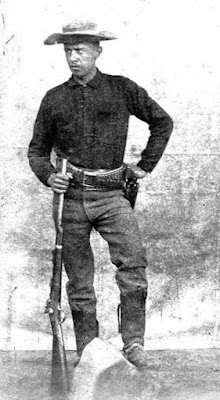The Lost Soldier Mine
The Lost Soldier Mine
It was in 1869, that Abner McKeever and his family were attacked by a large band of Apache warriors. The McKeever ranch was located at Gila Bend and a long distance away from the protection of Fort Lowell and Fort McDowell. At the end of the raid, the Apache made away with over 20 head of horses, 6 rifles, ammunition, clothes, food and sadly Belle McKeever as well. Abners very own daughter.
After the Apache had left the now destroyed ranch, Abner rode out to Maricopa Wells which was not far away. Maricopa Wells was a popular and reliable watering hole with many pools of fresh ground water. Stagecoaches, mail carriers, miners, travelers and even soldiers frequented Maricopa Wells. As Abner entered the small population of Maricopa Wells he told his story with great emotion and urged every able man to take up arms and help him retrieve his daughter.
Over 15 soldiers were posted to guard the Wells and 6 joined Abner, as well as 5 miners. As the posse began the pursuit they soon came across the Apache raiding party, but the Apache seen they were about to be attacked they split up into many smaller bands and they scattered to the wind. The posse also split up to keep the chase on and run the Apaches down.
During the hard chase three soldiers split off from the main body to chase down four warriors who rode into a arroyo heading South. Sergeant Crossthwaite, Private Joe Wormly and Private Eugene Flannigan were their names.
After a near running gun fight that was nearly 80 miles distant, the soldiers horses finally gave out. The Sergeant ordered his men lay their horses down their horses as cover and the two soldiers shot their horses and used them as cover. The four Apache turned and laughed at the soldiers, even taunted the men for a while before riding into a close by string of hills. The three soldiers were now alone and withonly one horse remaining there was no signs of the other men in the possession be seen. They were alone but still feared the Apache would return soon.
The soldiers set out the way they came and began heading north to where they separated from the rest of their companions. They came into a small mountain range and walked upon a Granite wash and found a spring that was thick with overgrowth inside of a tight canyon. But they finally had water at last and could drink their fill and water their only horse.
As the men drank the cold water and began to rest they noticed to their amazement that there was some gold nuggets lying about the spring and even inside of the spring itself but the nuggets were jagged and not rounded and soft. Pea size, marble size and one was even the size of a half dollar. They looked above the spring and noticed two quartz veins that was laced with gold. One vein was narrow and laced with beautiful gold and the other was a large vein and was a foot and a half wide and nearly 16 feel long being also laced with gold as well.
As the men stayed at the spring and regained their strength over the course of a two weeks they dug out much the gold with their knives and a small hatchet.
They loaded up the gold into bags made from the clothing they had on themselves. One bag was made from a pair of pants, another from two shirts sewn together and another was made from the Sergeants jacket and they loaded the bags onto the horse and set out northward still to the Gila River.
Just a days walk from the Gila River the men became separated after the horse died. Wormley reaches the Gila and was almost insane from his suffering but ran into some men and was able to guide the party back to his comrades after screaming and crying and telling his story. The men found Flannigan who lasted only on hour before passing away but was able to whisper about the gold they had found, where the horse was and about the spring where the gold was found. Not far was Sergeant Crossthwaites body. The Sergeant has his pockets filled with gold laced quartz.
Over the next 10 years Wormley tried over and over again to re locate the spring and the quartz veins of gold but every expedition ended in disappointment and failure.
He died penniless in Phoenix in 1880.
It is thought that the Mountains the soldiers were in could have been the Harqua Hala Mountains which later yielded many great producing mines and rich placers. Also some say it was in the Sierra Colorado Mountains west of Gila Bend. Others say it could have been Tyson’s Wells which is also a great placed gold area. But neither matches the description of what Wormley and Flannigan described. So it very well may still be out there!
If while on your adventures this week, you find yourself in this area, be sure to keep your eyes open. You never know what you might find! Also be sure to pack in plenty of water and tell someone where you are going and have a back up plan.
I hope everyone has a fun and adventurous week.
Stay Safe,Stay Alive & Keep Treasure Hunting!











Comments
Post a Comment